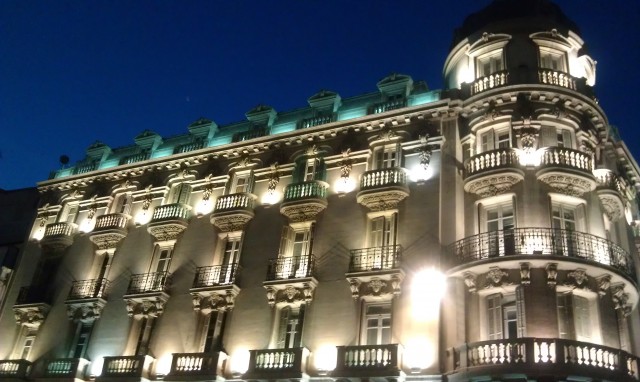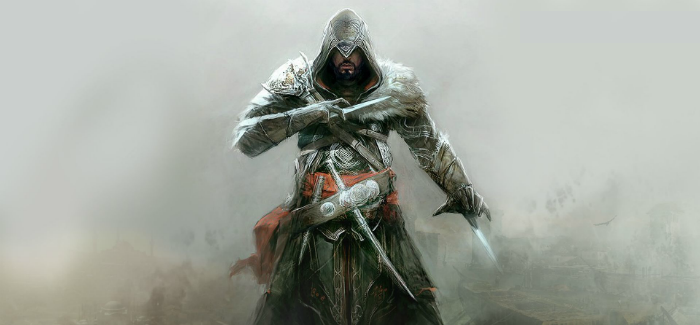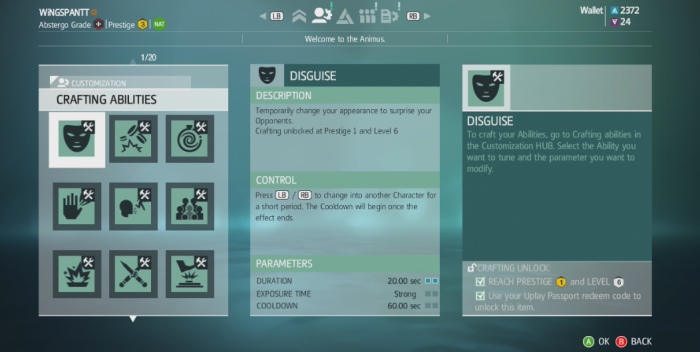

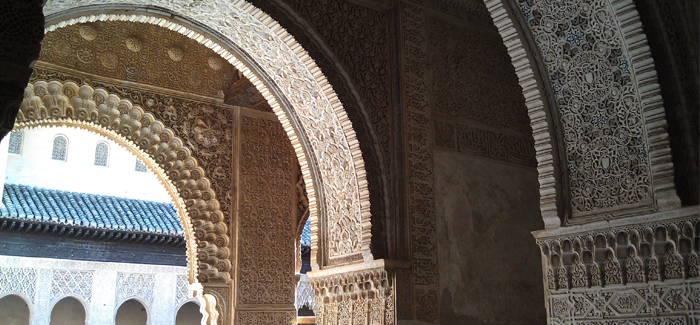
If the past is any indication, I’m going to be running into more semi-obscure real-life Assassin’s Creed locations all the time. It was only a few years ago I had visited the Mont Saint Michel abbey, an architectural accomplishment that couldn’t decide if it was an island or not. Didn’t matter – it was still breathtaking.
As far as other cities from the ‘Creed go, I’ve yet to complete tours of Italy or the Middle East, but Spain had always been the next destination on my globetrotting checklist. Beautiful architecture, delicious culinary delights, and culture so thick you could swim in it. Elle and I made haste to Barcelona.
Of course, nobody told me Barcelona wasn’t technically part of Spain. Sure, it is on the map, but the people there consider themselves Catalonian. And while Catalon may sound like the next boring Toyota sedan, it’s actually a region with a unique history I learned absolutely nothing about.
No, the only thing I learned while gorging my way through this exquisite city was that Catalonians speak the Catalon language, which isn’t quite Spanish. While it seemed like a fair trade, since I didn’t quite speak Spanish either, the end result was a few misread signs and a couple hundred mispronunciations. But I digress.
Our unfortunately short time in Barcelona meant we were soon on our way to Sevilla, or Seville as the gringos call it. As our cab pulled into what appeared to be a ghetto, we grew nervous… but if Barcelona was any example, Sevilla was safer than it seemed. As the day and night wore on following our initial exploration out of the Triana district, we were proven right. Scores of people of all ages, including aged grandparents pushing baby strollers, kept the streets lively well past midnight every evening.
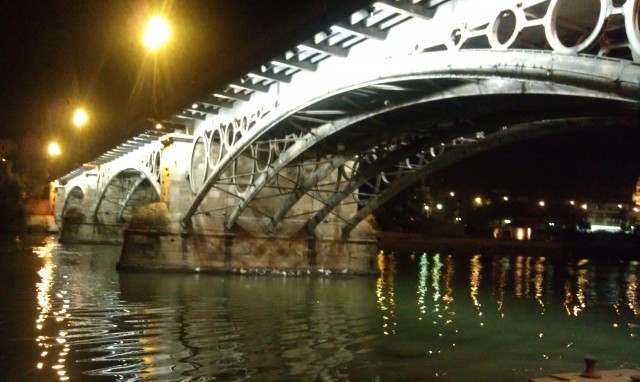 This was a city that truly did not sleep. Women and men, all in impeccable form and dressed like models, munched on tapas and sipped their cervezas much later than I could manage consciousness. Random teens pulled out guitars and strummed flamenco tunes while couples laughed under the city’s romantic bridges. Somewhere in New Jersey, people were getting stabbed at night instead. How quaint.
This was a city that truly did not sleep. Women and men, all in impeccable form and dressed like models, munched on tapas and sipped their cervezas much later than I could manage consciousness. Random teens pulled out guitars and strummed flamenco tunes while couples laughed under the city’s romantic bridges. Somewhere in New Jersey, people were getting stabbed at night instead. How quaint.
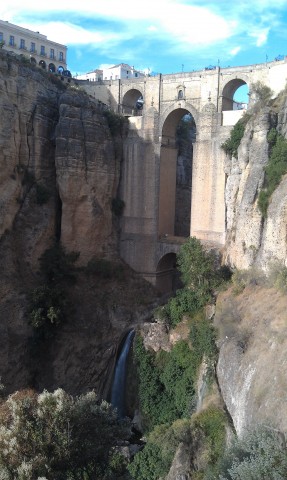
Pictured: our hotel on the cliff face. Not pictured: the streaks in my underwear.
Of course, the day was equally beautiful. The tight streets were packed with enticing food and relics of every age, from Roman times to Moorish control to the Inquisition to the modern day. The Giralda tower, standing over the city’s many monuments, has survived through most of Sevilla’s history, though with changes through the years. Looking up, I couldn’t help but imagine scaling its exterior, only to leap impossibly down into a convenient bale of hay.
Wonders seen, we prepared the next journey of our trip to a much smaller town, Ronda. Yes, Ronda is home to the first professional bullfighting ring in the country, but it’s more commonly known for possessing one of the most daunting bridges in Europe, the Puente Nueve. With a bit of luck, bribery, and dashing good looks, I scored a hotel room in the Don Miguel, a building straddling the town’s imposing gorge. Don’t look down.
Of course, aside from gawking at the bridge, drinking ourselves into a stupor, and hiking trails that began with barbed-wire laden signs reading “DANGER,” there wasn’t much to do in Ronda. We chugged a few more beers and rode a train to our final destination, Granada.
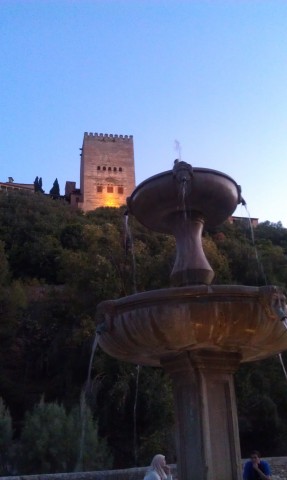
On the way to Alhambra, Spanish irony strikes.
The wonders of the pomegranate city were many. First, city law stipulates that all bars are fucking obliged to give free tapas with every drink ordered. Real restaurants were in short supply, since for six euros one could simply order three beers and be granted three plates of accompanying food. Needless to say, wining and dining was unparalleled.
The city itself held so much treasure. The ancient Islamic maze of houses and shops adorning the highest points of the city. The gypsy cave dwellings carved out of white stone cliffs near Granada’s limits… and still inhabited by exotic, sad-looking souls. The bustling shopping avenues parked in the middle of town and decorated with the vestiges of Renaissance Catholic rule. There was no end of things to look at, so it is no wonder a famous quote on the matter roughly states “There is nothing worse than to be blind in Granada.”
 Granada, the last holdout of Moorish power against the ever-encroaching Catholic forces of Ferdinand and Isabella. Here, sultans constructed wondrous streets, intricate monuments, communal areas and, of course, the Alhambra. Apparently the most visited tourist attraction in the continent, its powerful brown edifices seem to defy you even from miles away. The thought of assaulting such a fortress was off-putting, even now knowing it was possible.
Granada, the last holdout of Moorish power against the ever-encroaching Catholic forces of Ferdinand and Isabella. Here, sultans constructed wondrous streets, intricate monuments, communal areas and, of course, the Alhambra. Apparently the most visited tourist attraction in the continent, its powerful brown edifices seem to defy you even from miles away. The thought of assaulting such a fortress was off-putting, even now knowing it was possible.
Of course for me, this was the crown jewel of our vacation. Or was it? I had felt my heart soar so high on so many occasions since our plane first landed in Catalonia. And while I had remained excited to step into the walls of a place I had visited virtually so many times, it seemed like an impossible task to top what I had already lived. I told myself regardless of the outcome, I would soldier up the steep mountain, enter the ancient palace, and record the footage I would need.
Enjoying it was another matter entirely at that point.
But during that ascent, it was all but inevitable to feel drawn to the Alhambra. In a country full of gaudy (and even Gaudi) Catholic ornamentation of gold, silver, and yes, the suffering of Jesus, the stark walls of this Islamic icon seemed increasingly welcoming. Tranquil. From the lowest point to the gates themselves, water flowed down carefully constructed troughs, as if to indicate that life itself was sourced within the walls of the palace.
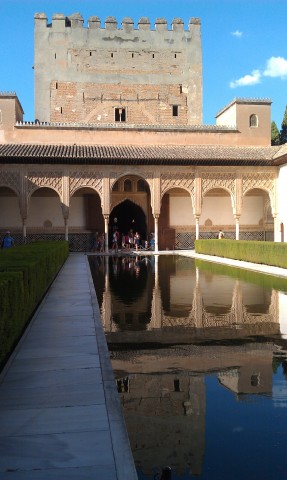 There are no real words to describe the feeling of entering this majestic place. My eyes danced around wildly, simultaneously taking in great beauty while searching for familiar areas from Assassin’s Creed: Brotherhood.
There are no real words to describe the feeling of entering this majestic place. My eyes danced around wildly, simultaneously taking in great beauty while searching for familiar areas from Assassin’s Creed: Brotherhood.
But I quickly gave up that search. I wanted to the building not only because our tickets granted us strict time limits, but also because it felt like a place that commanded respect. Here, nature mingled with the man made in soothing gardens. The grandiosity of the largest chamber’s walls gave way not to the gold of Catholic church ceilings, but to a dark nothing, speckled with bright spots evocative of the stars.
I imagined the architects reaching these high points and deciding no work of man could match the intrinsic awe the night sky imposes upon the human eye.
My only disappointment in this treasure trove of light, sound, and life was that the central courtyard, where the fountain of twelve lions stands, was closed.
This central place is celebrated the world over, and is featured prominently in Brotherhood, but I had to abandon my hopes of jumping out from behind this masterpiece and into the amazing space created by the surrounding pillars. A let down, yes, but there was still filming to do. I handed Elle the camera, and we began our work. The video that follows was planned in my head for months, but only when we had arrived did the pieces come together. Even then, the idea of capturing any aspect of the Alhambra felt unattainable. And yet, here it is.
I cannot heartily enough recommend Spain as a destination for your travels. But if you do go, take your time. Mosey slowly through its twisting alleys at night, stopping into bars crowded with middle aged locals dancing to folk music well past two in the morning. Climb the country’s great monuments, either the conventional way or with the assistance of a hook blade, and look down on the organic beauty of the centuries-old barrios below as kings and sultans once did. Find a bar with a few stray dogs outside and squeeze in. Order a tinto de verrano, bite into a masterfully sliced cut of the most flavorful ham you’ve ever eaten, and close your eyes.
There won’t be anything more you could ask to experience.
